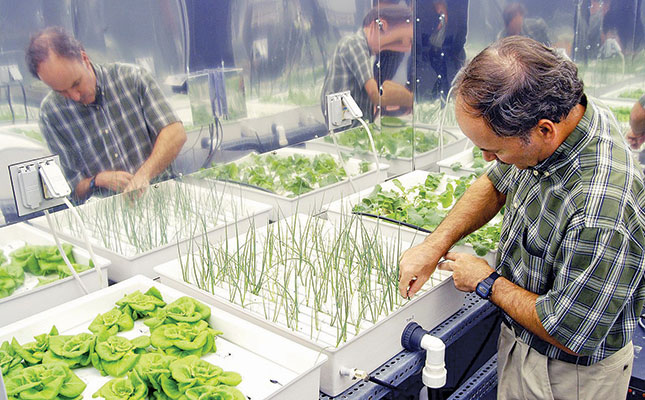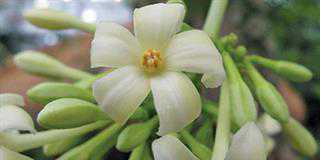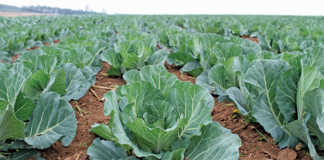
Photo: Nasa
The Agricultural Research Council defines ‘hydroponics’ as “a system where plants are grown in growth media other than natural soil”. All nutrients supplied to the plants are dissolved in the irrigation water.
Liquid hydroponic systems have no supporting medium for the roots. Instead, an inert aggregate material with a solid granular structure, such as sand, gravel, vermiculite, perlite or sawdust, supports the roots.
Hydroponics is an open system; the surplus nutrient solution delivered to the plant roots is recovered, replenished and recycled.
In hydroponic production, the nutrient levels supplied to the plants are determined directly. The yield is consequently far higher than that of a similar crop grown in soil.
Hydroponics principles
A plant obtains its nutrients by converting carbon dioxide, light and water into carbohydrates through the process of photosynthesis. With hydroponics, a plant gets its nutrients from the nutrient-rich water.
The absence of soil also means that the hydroponic system must physically support the plant while allowing the root to have maximum contact with the nutrient solution. A ‘growth medium’ that aids moisture and nutrient retention is often used for this.
In South Africa, hydroponic vegetable production is almost always carried out in some type of enclosure.
Different types
A number of hydroponic systems are available: nutrient film, drip watering, aeroponics, ebb and flow, and passive systems.
- Nutrient film: This system uses an oxygen-rich nutrient solution, and is ideal for a wide range of crops, including lettuce, strawberries, herbs, flowers, tomatoes, peppers, eggplant, squash and cucumbers.
- Drip watering: This is popular with small commercial hydroponic production operations, hobbyists and schools. It is often used to grow tomatoes, cucumbers, peppers, herbs and flowers.
- Ebb and flow: This is used for root cuttings, to germinate seedlings and to vegetate young plants. The crop is fed by a simple automatic flood and drain watering system.
- Aeroponics: Here, the roots are sprayed with nutrient-rich water. The system is excellent for starting large crops of seedlings, transplants and cuttings, or for growing a crop to full maturity.
- Passive systems: Ideal for home or office, this system can be used to grow any vegetative, flowering or fruiting crop. The plant determines when it needs water and nutrients.
Pests and diseases
The optimal growing conditions for plant growth unfortunately also favour the development and spread of diseases and pests. The hydroponic producer must therefore maintain optimal conditions for plant growth, but not for disease or pest development.
This balance can be difficult to maintain, and requires careful management. The producer should know which pests or diseases are likely to become a problem, and then take steps to reduce the possibility of their entering the greenhouse and gaining a foothold on the plants.
All pesticides must be mixed and applied correctly. These and other aspects of hydroponics will be discussed at a later stage.
Source: www.arc.agric.za













